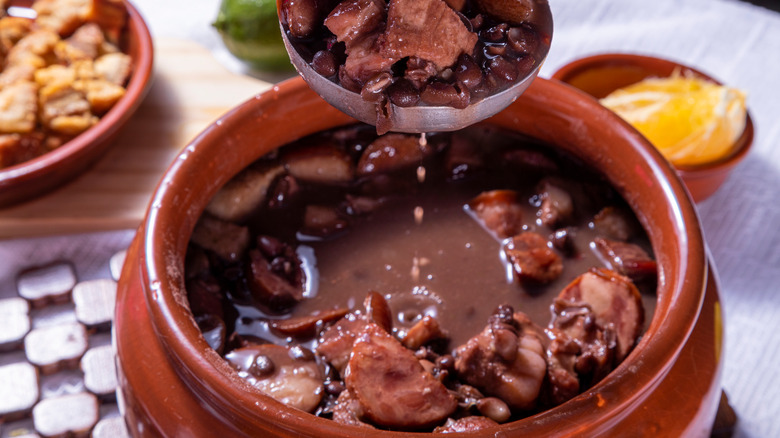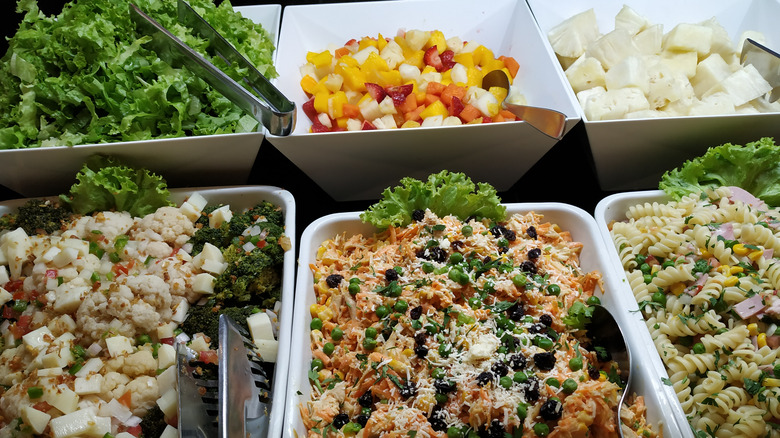This Is What Lunch Looks Like In Brazil
In the U.S. we're likely to grab a slice of pizza for lunch. In England, soup and salad is the usual choice. The French opt for sliced ham in a baguette. And in Brazil, feijoada — bean stew with beef and pork — is the order of the day. Generalizations? Of course. But the results of a survey by British office supply company, Viking, provide a jumping-off point for an exploration into the traditions, foods, and culture of lunch in Brazil.
Brazil is about 300,000 square miles larger than the contiguous United States (via WorldAtlas), so regional differences abound, but in urban areas Brazilian food is usually a blend of Portuguese tradition combined with myriad international influences, mostly notably African flavors (via Brazil Selection Travel). Consider feijoada. According to The Windup, the lunchtime favorite, and de facto national dish of Brazil (via Smithsonian Magazine), was created by 16th-century slaves brought from Africa by Portuguese colonists to work on Brazil's estates and plantations. The 21st-century version of the thick black-bean-and-pork stew usually includes rice, shredded greens, sliced oranges, and farofa – toasted yucca flour.
What do Brazilians eat for lunch?
Lunch in Brazil is traditionally a relaxed affair. According to Culture Trip, office workers typically take a one-hour break at midday to eat, unwind, and recharge, often at a kilo restaurant, where cost is based on the weight of the plate with food (kind of like an American salad bar). Eating the World describes dining at a kilo restaurant as a quintessential Brazilian experience, but for the uninitiated, the process can be overwhelming. Eating the World offers a primer: Upon arrival, pick up a plate and an order form. Approach the food tables and serve yourself. (Keep in mind, this is not an American-style all-you-can-eat buffet. The heavier your plate, the more you'll pay.) After you make your selection, approach the weigh station where your food will be weighed and tallied. Find a place to sit and enjoy. Want seconds? Simply go back through with your original ticket or grab a second one. When you're done, approach the cashier and pay your ticket. Easy-peasy.
So what will you find at a kilo restaurant and how much will it cost? Depends which one you choose. Venues range from cheap-and-basic to pricier-and-sophisticated. Some restaurants have grilles to custom-cook meat, while others specialize in specific foods — vegetarian, pasta, homestyle Brazilian (via Culture Trip). BBC Close-Up visited a kilo restaurant in São Paulo where a plate of food, including a grilled picanha steak, weighed in at about 5 kilos. At 3.59 Brazilian reals per kilo, that plate cost $BRL17.95 (about $3.50).

